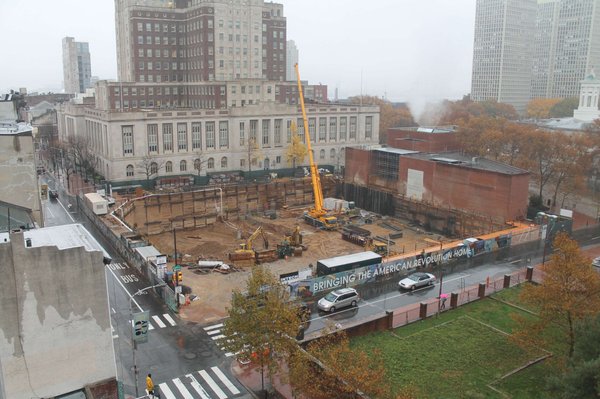Archeologists working on the site of the upcoming Museum of the American Revolution in Center City have discovered thousands of artifacts that date back to as early as the 18th Century — with some found sealed in old toilets.
The museum, set to open in April 2017 at 3rd and Chestnut streets, kept a running blog about the pieces of history uncovered since excavation at the site ended in October 2014.
PhillyVoice reported on the artifacts in May, but hat tip to Dan McQuade of PhillyMag for recently pointing out that several of the artifacts were found in an unusual spot: the privies, aka the toilets:
The team excavated a well and 12 brick-lined privies — outhouse vaults that also collected garbage — and found more than 87,000 artifacts from the tiny rowhouses that once lined the site. The privies and well were sealed when newer houses were built on the site in the 19th century; those houses were knocked down to build the old visitor’s center in the 1970s.
Some of the most treasured artifacts came from said privies. From the Making the Museum blog:
In all, we excavated a well and twelve brick-lined privies, most of them brimming with artifacts. One of the largest assemblages of artifacts came from an 18th-century privy in the southeast corner of the site, located behind a house that would have faced Carter’s Alley. Among them was one of our most treasured findings: the pieces of an English delftware punch bowl.
When these sherds were pieced together in the lab, we were delighted to see a resplendent ship flying British flags with the words “Success to the Triphena” below. (“Triphena” is the name of the ship depicted.) We were the first people to lay eyes on this object since it was broken and discarded around the time of the American Revolution.
You can read more about the artifacts in our May article here.

